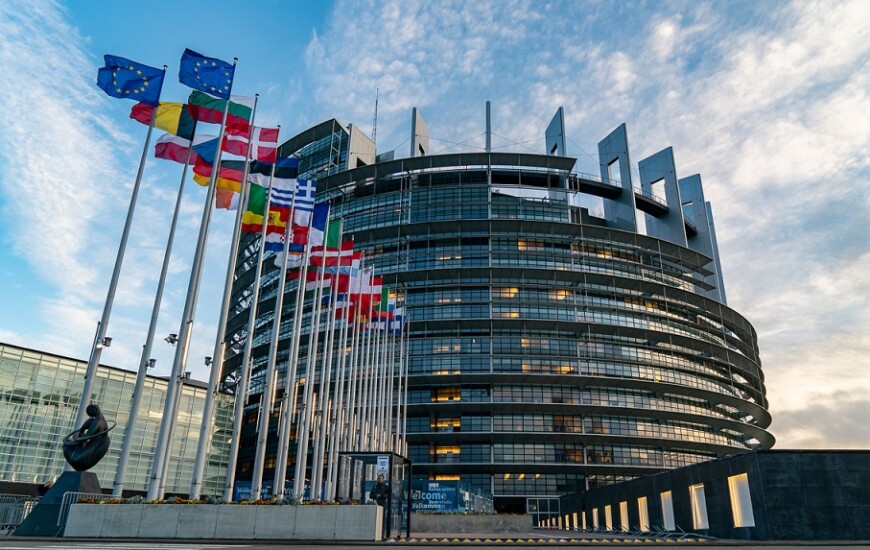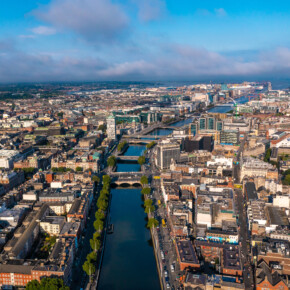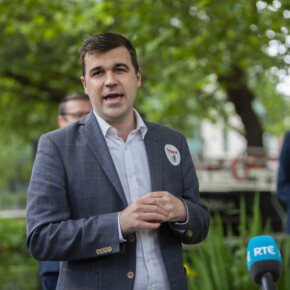Breaking down the fight for Europe
Mike Finnerty 08 Feb 2024
European elections are a chance for Dubliners to send who they think best represents their vision for Europe.
Dublin became a 4-seater constituency again at the 2019 round of elections and will remain as a 4-seater for the upcoming elections in June.
Fine Gael selected Regina Doherty as their candidate following Frances Fitzgerald informing the party she did not want to seek re-election in October.
Doherty being the sole Fine Gael candidate on the ballot represents an interesting change for Fine Gael, as the party are only opting to run one candidate in 2024 compared to the two they ran in 2019.
In 2019, Fine Gael ran former SDLP MP Mark Durkan as a candidate alongside Frances Fitzgerald, and while Fitzgerald attained 16.2% of first preferences, Durkan gained 4.5%.
Fine Gael gaining 20% of first preferences in 2019 represents a high benchmark that Doherty may struggle to reach.
While polling from the continent points to a strong performance by right-wing candidates, Ireland appears to be an outlier in the trend for the current round of elections.
In the case of Dublin, the chances of a candidate to the right of Fianna Fáil and Fine Gael being elected to the European Parliament is non-existent.
Based on the last 5 European elections to take place in Dublin, it takes an average of 16.1% of first preferences to get a candidate elected.
The race boils down to a three-way fight between Sinn Féin, Fianna Fáil and Fine Gael, with the final seat a shootout between progressive candidates of the left.
Sinn Féin have made no secret of treating the upcoming locals and European elections with the urgency of a general election, and this is reflected in their European candidates for Dublin.
Lynn Boylan lost her seat to Clare Daly in 2019, but considering Boylan topped the poll in 2014 she has experience in commanding an electorate’s attention.
The party is confident enough in Boylan securing re-election that they have enlisted veteran Dublin City Council member Daithí Doolan as her running mate.
Polling has indicated that Boylan should win her seat back with ease, but the question remains if Doolan will join her.
Should Doolan prove successful in his bid for Europe, this will mean that at least one of the current Government parties will lose a seat.
How their transfers and vote surpluses are distributed will do a lot to influence the outcome of the race.
The Social Democrats have selected Sinéád Gibney as their candidate, with Gibney’s CV including the role of chief commissioner with the Irish Human Rights and Equality Commission as well as positions with Google and Trinity College.
Gibney said “I love Dublin and I’m passionate about making it an equal city, where decent housing, decent work and a decent society are within the reach of everyone – not just the very few.”
Average voter turnout in Dublin over the last 5 European elections has stood at 45.2%.
Clare Daly appears likely to be re-elected based on current polling, and there are a number of factors in her favour.
As European elections are seen as a chance to voice displeasure with the incumbent Government of the day, Daly’s path to re-election is a lot clearer than it was a year ago.
Across Europe, poor or mediocre turnout translates to candidates who are more critical of the European Union project, be they left, right or indifferent, getting elected.
To illustrate this point, only 28% of voters turned out to vote in the Czech Republic in 2019 and elected three members of the Pirate Party to represent them in Europe.
Even the addition of People Before Profit’s Bríd Smith on the ballot is unlikely to deter both Sinn Féin and Daly too much, but a decent performance from the party would show that the left-wing vote in Ireland is still as strong as ever.
There have been murmurings on Sinn Féin’s left that the party’s stance on taxation, immigration and environmental policy leaves a lot to be desired, so it is possible that a candidate like Smith, who is to the left of Sinn Féin, could benefit from voter disillusionment.
The inclusion of Labour’s Aodhán Ó Ríordáin into the race proved to be somewhat unexpected with Senator Annie Hoey being the presumptive favourite until Christmas, but Ó Ríordáin’s decision to run in the wake of the Dublin Riots and his belief he can better represent Dublin in Europe as opposed to the Dáil was enough to secure the nomination.
Labour lost their Dublin seat in 2014, and barring a minor miracle in polling, it is unlikely that the trend will be reversed.
Across Europe as a whole, the two main groupings of the EPP (the party of the centre-right such as Fine Gael, Germany’s Christian Democrats and Spain’s Peoples Party) and the S&D (home to Labour’s continental cousins such as Germany’s SPD, Spain’s PSOE and Portugal’s Socialist Party) are likely to be the big losers in June.
Labour is no exception, but can take some small consolation in the fact that their performance is likely to be replicated across Europe and isn’t a reflection on them.
It could be surmised that Ó Ríordáin is running for Europe in an attempt to boost his public profile ahead of the next general election, which is likely to be equally difficult for Labour.
Having an elevated national profile ahead of a tough re-election bid in Dublin Bay North is not the worst idea in the world.
Green parties were the success story of the 2019 European Elections, finding themselves in tune with the Fridays For Future movement, but Green candidates are not likely to benefit from the same love from voters this time.
Green politics have become part and parcel of mainstream politics, with pretty much every major European party from far-left to centre-right having an environmental policy of some sort.
At a European level, the Greens can point to their work in getting the Green New Deal over the line, but 5 years later the novelty of having a movement dedicated solely to green politics has worn off.
Just like Ireland, green parties have gone into government across Europe since 2019, and just like their Irish counterparts, they have seen their fortunes decline in government.
Green parties have slipped in polls since going into government in the likes of Germany, Austria, Sweden and Finland, and that apathy will extend to the ballot box in June.
The drop in Green support could extend to Ciáran Cuffe who rode the green wave to the top of the polls in 2019.
The one saving grace for Cuffe is he is exceptionally transfer-friendly, so even when his share of first preferences drops, he will still be in with a fighting chance of securing re-election.
Fianna Fáil’s Barry Andrews didn’t take his seat until the Brexit melodrama was sorted out in early 2020, but current polling indicates that Andrews is likely to retain his seat and serve a full 5-year term as Fianna Fáil’s man in Europe.
Fianna Fáil can afford to take it easy; their man will get elected regardless of any leftwards or rightwards shift in Ireland and on the continent, it is Fine Gael that will be sweating the outcome of Dubliner’s June trip to the polls.











